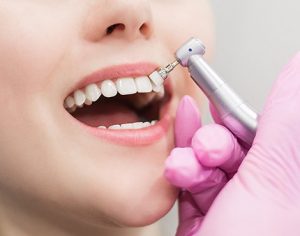Dentistry terms have increased year and year because dentistry continues to evolve at a pace. One of those terms is scale and polish. There’s a slight difference to a check-up and clean, but it is still an important responsibility of a dental hygienist. If you’ve been booked in for a scale and polish treatment, here’s everything you need to know about it.

What Is Scale And Polish?
Scale and polish treatment is a form of professional cleaning for your teeth and is a common form of treatment for those who have high amounts of tartar developed from plaque which simply cannot be removed by brushing your teeth at home. When you wake up and brush your teeth, you’re trying your best to remove the plaque and tartar, and it proves difficult.
This is where Scale and Polish treatment comes in. The treatment is designed to remove tartar and plaque remains almost instantly off of your teeth. The dental hygienist uses what’s known as an electric scaler to remove them with fast vibrations which break the hard substance from your teeth and gum line. The hygienist may use manual instruments to permanently remove tartar build-up. The treatment is then completed by washing away the debris from your mouth before your teeth are polished with a special gel to give it that missing shine.
Why Is A Scale And Polish Necessary?
Tartar build-up is a sign that your oral health isn’t being taken seriously. Naturally, when food debris remains inside the mouth for a period of time, a sticky pale substance of plaque builds up around the teeth. Plaque is full of bacteria and turns into acid when bacteria and sugar combine together. The acid attacks the teeth, wearing away your enamel and causing tooth decay.
Plaque builds up over time and hardens into tartar. It is very difficult to remove it just by brushing your teeth. Therefore, the hygienist will recommend a scale and polish treatment.

Can I Resolve The Problem At Home?
The truth is, no. Although there are steps you can take to reduce plaque at home, the soft bristles on your toothbrush can only take so much pressure before the bristles become damaged and unusable, meaning you’d need to change your toothbrush. A toothbrush should always be used gently against your teeth, otherwise, you’re doing more damage. A toothbrush shouldn’t be used to remove tartar. Special instruments are needed to scrape it off teeth and the only place this can be completed is with the hygienist.
Are you next in line for scale and polish treatment? Our Springvale dentists are more than ready to restore the missing shine in your smile. Contact us here to book yourself in today!